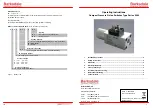
2-14
Cisco ME-3600X-24CX Series Switch Chassis Configuration Guide
OL-27620-01
Chapter 2 Configuring T1/E1 Interfaces
Configuring CEM
Using CEM Classes
A CEM class allows you to create a single configuration template for multiple CEM pseudowires. Follow
these steps to configure a CEM class:
Note
The CEM parameters at the local and remote ends of a CEM circuit must match; otherwise, the
pseudowire between the local and remote PE routers will not come up.
Note
You cannot apply a CEM class to other pseudowire types such as ATM over MPLS.
SUMMARY STEPS
1.
enable
2.
configure terminal
3.
class cem classname
4.
payload-size size
5.
dejitter-buffer size
6.
exit
Command
Purpose
Step 1
enable
Enables privileged EXEC mode.
•
Enter your password if prompted.
Step 2
configure terminal
Enters global configuration mode.
Step 3
controller {t1 | e1} 0
/number
Enters controller configuration mode.
•
number—Specifies the location of the controller. The number range
for T1 and E1 is 1 to 16.
Step 4
cem-group group-number {unframed |
timeslots timeslot}
Creates a circuit emulation channel from one or more time slots of a T1
or E1 line.
•
The group-number keyword identifies the channel number to be
used for this channel. For T1 ports, the range is 0 to 23. For E1 ports,
the range is 0 to 30.
•
Use the unframed keyword to specify that a single CEM channel is
being created including all time slots and the framing structure of the
line.
•
Use the timeslots keyword and the timeslot argument to specify the
time slots to be included in the CEM channel. The list of time slots
may include commas and hyphens with no spaces between the
numbers.
Step 5
End
Exits controller configuration mode and returns to privileged EXEC
mode.
















































